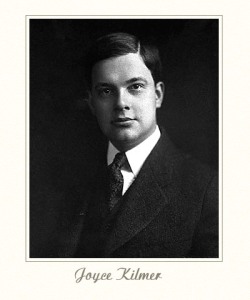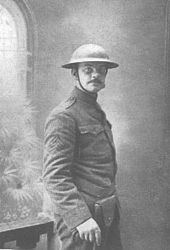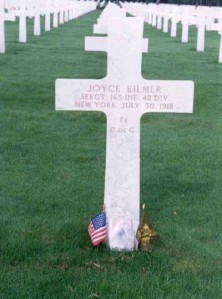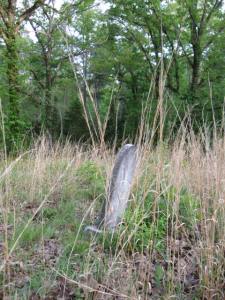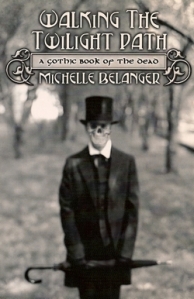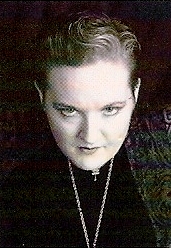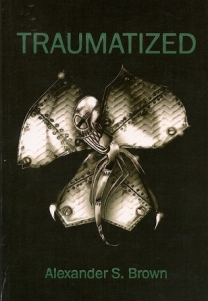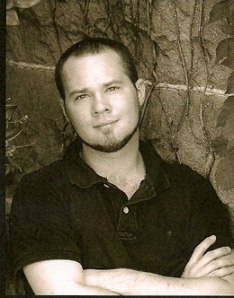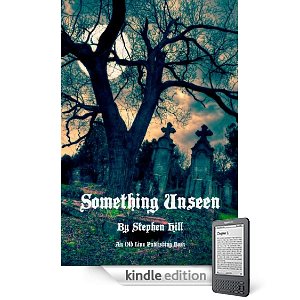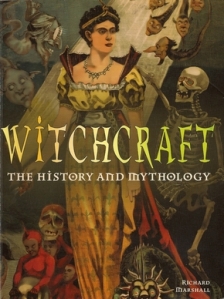written by Angela L Burke
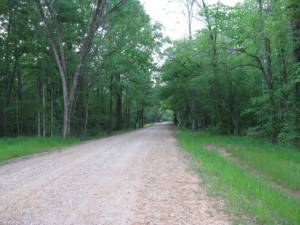 Part I
Part I
Benjamin Blackwell was the most feared man in town. For that matter, he was the most feared man in Hill Country. He had money, and lots of it. To a big city dweller, he looked like a Mississippi backwoods hustler, but in the small town of Cedar Rock , Mississippi, population 396, he was believed to be the Devil, himself.
When the stock market crashed in 1929, on a day known as “Black Friday” , Benjamin Blackwell’s choke hold on most of the people in the small, country town of Cedar Rock, became final. The tiny, town bank had not been insured and most people in the area lost their life savings. Benjamin Blackwell had bailed many of them out of foreclosure with private loans, in exchange for the titles to their lands, farms, cattle and homes. He was also swift to evict entire families from their houses, confiscate their lands and auction their belongings to wealthy bidders if they failed to pay on time. Those who’s belongings and lands did not earn him enough money to cover their loan, plus the interest, were forced to do hard labor in his cotton fields, for miserable wages. Forced to lease and cram their families into shanty dwellings for a place to live. Many could barely afford to feed their families and were given Government ration coupons. These coupons were good for one piece of bread and one slice of meat per day, per person. Many people had nothing left to trade among themselves and were forced to do without many of life’s necessities, including clothing , food and proper shelter. Often times trading their ration coupons for something to wear or a place to sleep.
There was reason to be nervous, if you worked for Big Ben Blackwell. At this time in history, money and work were nearly impossible to come by in these parts. The Hill people of Northern Mississippi were mostly small, family owned farmers, share crop workers and lumber men. Their living conditions were poor and many did not even have electricity or indoor plumbing. Most of them still had out houses and wells.
Benjamin Blackwell’s blood line was one of the oldest in the county. His ancestors had purchased this land, or stolen it some whispered, from the Chickasaw. They had owned hundreds of slaves, over hundreds of years, black, irish and native. They had been Confederate Officers and Black Market Traders and Throat-cutting Businessmen. They were bullies and thieves and ruffians, only they had real money to back them up. They had once owned hundreds of thousands of acres of the Hill Country. Most of which, had been lost after the Civil War. But not all of it. They still carried the Blackwell dark genes and vicious temperaments. They would never go down easily. They were never liked, merely tolerated, but always respected to their faces, and they were feared, even in their absence.
Benjamin Blackwell owned most of the town and most of the farm land. He was a cotton broker and a mean business man. He was in charge of buying and shipping cotton crops, raising and selling produce , cattle and hogs and even had his hand in local saw mill operations. If you didn’t work for him, then more than likely , you didn’t work. Those who were lucky enough to still have their farms, owed Benjamin Blackwell, in one form or another, for bailing them out. He always collected on the debts people owed him. No one crossed Ben Blackwell without suffering a consequence, whether it was immediate or long in coming. He did no favors out of sympathy. He was hard, cold and out to make money. Regardless, of who he had to step on to get it.
But he was also a cheap skate. The only time he was ever seen riding in a car was when he went to Memphis or Tupelo on business. On his plantation, which he rarely left, Benjamin Blackwell always rode his horse. He was not quick to give up his throne that towered over his people. He could never achieve this level of intimidation in a pick up truck. He didn’t like change, unless it made him money, and to feed his horse was cheaper than gassing up his truck.
When he walked down the sidewalk, people cleared a path to let him pass. He was big, brutal and intimidating. There were many who despised him. He lived at and owned the Blackwell Plantation on the outskirts of town. It had been lived in by his direct family, since 1836. He still had over 15,000 acres of cotton fields, not to mention his vegetable farm and the cotton gin. He also owned the general store and some say, the town banker. Some local people even claimed, that he owned the law and the preacher. Whispers behind closed doors , of course.
Sheriff Conley was a wimp and everybody knew it. He would get so nervous when Ben Blackwell was around that sometimes, he would stutter. He’d had the problem since he was a boy and the kids had made fun of him at school. He had grown out of it as he aged, but when Benjamin Blackwell came into town, his tongue-twisting , childhood speech impediment would return. Most of the time, Conley either did as he was told, or did nothing. He was a sorry excuse for a sheriff and Benjamin Blackwell liked it that way. He made sure that the elections went in Conley’s favor. He didn’t need outside trouble.
Reverend Jonas was pastor of the Hill Country Holiness Church. He was thought by some, to be a hypocrite and a fraud, because he turned a blind eye to the sins of Benjamin Blackwell. Without Blackwell’s financial support, the church would have to close its doors. The Reverend Jonas would be out of a parsonage, a poor house, and a wage. Reverend Jonas feared Ben Blackwell as if he were Satan in the flesh. His faith was weak, but his greed mixed with his fear of being run out-of-town, or worse, kept his tongue in check. He ran the soup kitchen and provided cots for the homeless at the poor house. But, he could have done more. He skimmed the best of the donations for himself and his family. He had pocketed at least half of the money donated to the cause, by the Blackwell Family. His own family never went hungry or without something nice and new to wear. The poor house he oversaw, was one of the worst places in town to have to live. In fact it wasn’t even in town. It was an eyesore to the town people. The poor house was a large white framed three-story boarding house. It had no electricity, no running water and no indoor plumbing. There was an outhouse in the back yard, a water well pump near the back porch and a wash tub for bathing. There were many in the poor house, who were elderly, abandoned or mentally disabled. There was no one to care for them properly. It was not uncommon to see someone die at the poor house. There were new graves almost every month in the potters field section of the town cemetery. Most deaths at the poor house, were a result of neglect, starvation, illness and disease. But there were also three suicides, and two murders committed at the poor house. The towns people secretly suspected that the deaths were somehow Benjamin Blackwell’s fault. But no one dared try to prove it. There was only one church in Cedar Rock for white folks. No one was forced to attend, but those who did so were either, blinded to the reality of their situation and were led like sheep to the slaughter. Or they were quickly made to feel guilty, for being ungrateful for God’s blessings. As well as, made to feel, fear of retaliation, either from God, or Benjamin Blackwell. Neither was a comforting thought.
The colored folks and the sharecroppers had their own old wooden framed church, out in the woods on a trail off Blackwell Road. It had once been a school-house in the late eighteen hundreds for the plantation workers children. It had long ago been abandoned as a school. The church members could worship on Sunday Mornings for two hours. The white sharecroppers had church from 10 am til noon. The colored folks had church from one til 3 pm. Benjamin Blackwell owned the land and the building, and this was all the time he would allow them. There were no fancy pews or stained glass windows, just old, hand split, log benches. There was no piano or grand organ. Just the weary voices raised in song to their Only Hope. The heat source in the one room church, was a cast iron, pot-belly stove, which did little to warm the parishioners in winter. The drafty windows leaked as icy swirls of wind, blew in like a winter crow, chilling the bones of all who prayed there. In the summer time, there were no air conditioners or fans. The parishioners baked in sweltering, humid temperatures as if they were viewing the gates of Hell from the front row. The heat was a warning of punishments to come for sinners. But the faith of those who came here was strong. The people who worshiped here were good people who lived in bad circumstances. For most members, their biggest regret was that, they felt helpless to stop the evil that permeated all around them. They endured their hardships as a test of their faith. They left judgement to God and believed that those who tormented them in this life, would be given their just reward in the hereafter. The Sharecropper Church had no full-time pastor. Visiting preachers and sometimes young men from the Holiness Church in town would come out to preach the morning service. The colored church had a preacher. Brother Isaac Wilson. He was 82 years old, he had been the plantation preacher for 55 years, but he could still get the place jumping. The colored folks did a lot of singing and a lot of praying.
Those in the area that didn’t attend the Town Holiness church, were usually shunned, lied and gossiped about, or just plain ignored. There were some who were even rumored to be Hill Witches. They practiced herbal medicine and were believed to be able to tell fortunes and cast spells. They were sought out in secret but, avoided in public. Many were descended from slaves or had learned their medicine knowledge from their Celtic, African and Native heritages. Their were even rumors that deep in the hills, there was a secret band of mixed blood gypsy witches, who did sacred rituals in the deep woods. Stories about the witches had been around, long before the Blackwell family ever came to Mississippi. There had been rumors of Hill Witches since the first man ever set foot in Hill Country. There were even rumors that the Blackwell Cemetery was once a sacred burial ground of the Chickasaw. It had even been whispered that an angry Chickasaw warrior spirit, roamed the woods behind the Blackwell Cemetery and that if he caught you, you might get scalped. But that was most likely a tall tale, made up by kids, telling tree house stories.
Slavery had been illegal in Mississippi since the Civil War, but reconstruction and the treatment of people of color, strangers, and those of poverty, had been slow to change in the Hill Country. Segregation was still practiced and the colored and the poor were treated with little respect by Ben Blackwell. To him they were all his property, regardless of their color or their heritage. It had been rumored that he was a Grand Wizard of the Ku Klux Klan, the notorious, ghost riders from hell. But very few people ever spoke about those things, for fear of retaliation. It had also been rumored that Benjamin Blackwell had been responsible for the deaths of at least 20 men from behind his white sheet. That disobedient workers were threatened, beaten, and targeted for barn burnings and lynchings by Blackwell’s men. He had nephews and cousins that did his dirty work for him.
His next of kin, Amos Blackwell, was Ben’s younger brother and his trusted right hand man. Amos was big, ugly and full of spit and vinegar, and he threw his weight around. He did not have the education or the business smarts to fill Ben’s shoes, no one in the family did. Everyone knew who the boss was. And everyone also knew, that Amos Blackwell would never measure up to Benjamin’s level. Amos Blackwell had no back bone of his own. And Amos knew in his soul, that someday, when Ben was gone, that he would never be able to keep the plantation going, but he was head strong, over-confident and determined to be the boss someday. People jumped when he told them to, and payed up when time expired. He showed them all how easy they had it with Ben running the show. He would do it his own way someday..and he’d show em all !
He would lose some of his arrogance, when he realized that the only reason people were afraid of him was because of Ben Blackwell’s black shadow standing behind him. Without that, he really wasn’t that important. In the mean time, Amos worshiped the ground Ben Blackwell walked on. Ben was his meal ticket and Amos would do whatever Ben wanted, no questions asked.
Martha was beautiful and loved by everyone. No one could believe it when she married Ben Blackwell. But town gossips chattered that it had been an arranged marriage, between Martha’s father, and Ben’s father, Braxton Blackwell. The arrangement was said to have been made, in order to settle a gambling debt . But everyone in town knew that Ben had been in love with Martha since grade school. He had been determined that no one else would have her. He made a point of letting all the young men in town know it. Braxton had been convinced by his son, to make the deal. She was not extremely beautiful, but she was desirable and soft to look at. She was sweet and quiet and did as she was told. Benjamin liked that in a woman. Her mother had died in childbirth and her father was a Riverboat gambler. Martha was often left to live at her Aunt Charlotte’s house in Memphis or neighbors in Cedar Rock, while her father caught a River boat to New Orleans to gamble. But, Martha was always the lady in public and when she married Ben, she carried out her wifely duties in silence and without any complaints. At least not in public anyway. Some said, that Martha loathed Ben Blackwell and that Billy had been conceived out of a forced relationship. But, Martha’s only happiness was Billy. She was a kind and loving mother and spent as much time with Billy, as she could. She loved her son dearly, and so it was then rumored that maybe, he wasn’t Benjamin Blackwell’s son after all. Small town gossip gives way to boredom, but causes terror for its unsuspecting victims.
Benjamin Blackwell was not blind or deaf to the rumors and the suspicions planted in his ears, grew like menacing Kudzu vine, making Benjamin paranoid. Ben was jealous of “the boy” and hated the close relationship that he had with his mother. He would often become angry at “the boy” for no apparent reason, especially if Ben felt he was being coddled by his mother. It was rumored among the staff that Ben would often times lock Billy in his room for days without letting him out, because “the boy” was in his way. If “the boy” didn’t finish all the food on his plate, he would be served the same cold food, for days at a time, until he ate it, often times, making him deathly sick.
Blackwell was known for his short temper and lack of compassion for human suffering. He had grown up with a silver spoon and an abusive bloodline. He felt that the world owed him and he was determined to collect his rightful dues. He didn’t like sissies, cry babies and whiners. He had been taught to suck it up and take it like a man. He had been raised to get his way at all costs and at any expense.
One day, when “the boy”, Billy was about six years old, he had been sitting up in the hay loft of the horse barn, secretly drawing pictures of horses. A small troop of red wasps had been building a new nest in the rafters, just above the young boy’s head. Suddenly, an angry wasp dived at his face. Billy panicked and began to wave his arms around in the air, screaming hysterically. This only angered the red wasps more, and they began to dive towards the panicking child. He was stung numerous times in the back and legs. Trying desperately to get away from them, he fell over the side of the hay loft, crashing into a small pile of hay. He didn’t break any bones, but he received a nasty sprained wrist. He had been stung several times in the back and legs, and had a small purple goose egg on his forehead. He was crying and in pain. He ran towards the main house to seek out the comforting arms of Mammie Faye.
But, Mammie Faye was in the basement doing laundry and didn’t hear the poor boys cries for help. Instead of finding comfort, he had run out of the barn, straight into the rock hard legs of his Father. When the boy tearfully explained what happened and showed his father his injuries, Benjamin Blackwell jerked the boy up by his collar and hauled him out to the woodshed for a strapping. Benjamin was angry that the boy had been in the barn loft to begin with. He felt that if the boy was gonna “cry like a baby”, for something that was his own fault, he would give the boy a good reason to cry. “That’ll teach ya to stay out of the damn barn! ” Benjamin had yelled at the boy, as he hovered in a trembling, fetal heap in the woodshed.
Billy’s mother, Martha passed away unexpectedly when Billy was only 7 years old. She had caught a bad cold, which had developed into pneumonia in both of her lungs. Benjamin Blackwell did not believe in big hospitals and sent for the local doctor. In her weakened state, he had refused to let young Billy in to see his mother. He had told Martha, that he had sent the boy over to stay with his brother Amos until she was better. She never got to say goodbye to the boy. Benjamin was devastated at her death, especially when her last words to him were, ” take care of Billy”.
Benjamin was said to have taken his grief and anger at his beloved wife’s death, out on the boy. Billy was small and fragile and not cut out for heavy farm work. He was shy and quiet and had no interest in learning about the family business. He was a day dreamer, he loved music and art and literature and wanted to be a writer and an illustrator of children’s story books. He loved adventure stories by Mark Twain. Huckleberry Finn and Tom Sawyer, being his favorites. His mother Martha had read these stories to him every night before tucking him into bed. But, Ben could see no future in fictional, “make-believe” and thought it idle laziness, to sit around doodling and drawing. He had forbidden the boy to waste his time with it.
Billy would sneak off to his favorite hiding place in the nearby woods, near the bubbling creek and sketch charcoal drawings with pieces of black coal that he’d stolen from the coal bin, in the plantation kitchen. He would make up adventures and draw pictures to illustrate them. He was surprisingly talented and drew very realistic images, in spite of his lack of drawing supplies or artistic training.
Mammie Faye would give him canvas flour sacks to draw his pictures on . She would save the paper labels off the canned goods and he would use the backs of them to draw on. Sometimes, she would even go so far as to steal, Mr. Blackwell’s letter head paper from his study, so that the boy could write his stories. Billy was at least afforded a proper education, although he would never live long enough to use it.
Mammie Fay was Billy’s nanny, the head housekeeper and the plantation cook. She had been working at the Blackwell Plantation all her life. Her parents and grandparents had once been slaves on the Blackwell Plantation and after the Civil War had stayed on as workers and share croppers at the plantation. Mostly because, they had no where else to go and because it was the only way they could survive. Some of them were just to afraid to leave. Mammie Faye lived on the grounds, in the nanny quarters in the Blackwell Plantation attic.
Billy loved her dearly and she doted on the boy and loved him like her own child. Mammie Faye had never been married, but it was rumored that she had given birth to a premature baby, when she was just a young girl. It was a family secret, that was never proven or spoken of in public conversation. But the story told, was that, the baby had been taken from her at birth and died because it was weak, under-developed, and half white. Many believed, that the baby’s father had been Braxton Blackwell, Ben’s own father, and that Braxton had smothered the baby, as soon as it was born, in order to hide his secret relationship with her. It would have been obvious to anyone who saw the child, had it lived, that it’s father was Caucasian. Braxton Blackwell would not let the mixed, illegitimate child, tarnish his reputation in the community. Mammie Faye had never forgiven him for taking her child from her. But, she never spoke a word about who the father had been, or if the relationship had been of her own choosing. She never married and had taken on the trusted responsibility of raising Billy Blackwell, from the time he was born.
Billy died at age 13, on a hot summer day in August of 1929, Not from falling off his horse down a steep embankment, as had been reported. But from the brutal beating he had taken, at the hands of his own father. Ben Blackwell was said to have whipped the young boy with a razor strap, until he could no longer stand up. He had become enraged when he saw the black soot from the charred coal on Billy’s hands and that his stolen letterhead was being used as sketch paper. After the brutal whipping, when the boy failed to walk himself back to the plantation house from the woodshed, Benjamin had beaten the boy in the head with his bare hands, until he was unconscious. Billy lay in a coma from a brain injury for two days, one side of his face, fractured, bruised and swollen. He could not have opened his left eye, even if he had been awake. His fragile body was tender and bruised with shades of deep purple covering his ribs, his back and his legs. His death was ruled an accident by the town doctor and the plantation staff was told to keep quiet about the beating or suffer the consequences. The boy’s obituary read, that he had died from a fall from his horse, down a steep embankment and suffered a head injury to the brain and internal bleeding of the abdomen. But those who knew the truth, did not speak the truth, out of fear for their own lives.
It is said, that Mammie Faye was furious with Benjamin Blackwell when she learned of Billy’s beating. And that when the boy died, she cursed Ben Blackwell, with a spell, for a painfully slow death. That she had secretly vowed, that when Ben was finally dead, his soul would not rest, but would instead, be tortured by hissing rattlesnakes and stinging red wasps, crawling over his corpse . That he would die a lonely man, with few mourners. That his name and his land would be cursed forever and he would be trapped on the land, in a haunting existence in the afterlife. Stuck in a torturous black gap, until the day of God’s final judgement. She was even more enraged when Benjamin Blackwell, put the boys grave in the old slave section of the Blackwell Plantation Cemetery, instead of laying him to rest, next to his mother.
The day of Billy’s funeral, which no one except Reverend Jonas, Mammie Faye and the house help, turned out for the burial service, Benjamin Blackwell instead, got raging drunk. He removed all the boy’s belongings, drawings and clothing from his room. Downed a bottle of boot leg whiskey and burned all of what remained of Billy’s identity, in a blazing fire pit. Ben Blackwell then had the boy’s room stripped, cleaned and locked. Forbidding anyone to ever enter the room again, not even to clean it. The next day Benjamin Blackwell went on about his daily business, as if nothing had even happened. He never spoke of Billy again and would become extremely upset, if anyone mentioned the boy’s name in his presence. He removed all photographs of the boy from display in the house, as if he had never existed.
Mammie Faye had hidden the drawings that Billy had made for her, inside her mattress in the attic, wrapped up in a sugar sack for safe keeping. She had managed to hide a small photograph of the boy, as a young child, sitting on his mother’s lap. She kept it inside the mattress, along with the drawings. It was said, that late at night , the muffled sobbing of Mammie Faye could be heard in the attic, weeping over the dead boys drawings. Then the sound of whispers would be heard, as if secrets were being spoken inside the walls.
Blackwell’s home sat on a small flat hill, at the center of the plantation, down a long shady, dirt road known, unsurprisingly as, Blackwell Rd. No one else lived on the road unless they worked for him and Blackwell was frequently seen riding, up and down the old dirt road on his massive black horse, keeping a watchful eye on his workers and his scattered tenants. The size of the horse was seventeen and a half hands, one of the biggest horses that folks in these parts had ever seen. The massive black horse’s eyes were as dark and frightening, as the giant who rode him. And the beast was as menacing to look at, as his evil master. Blackwell towered over the town people, like a black demon from the depths of hell itself. This only added to Blackwell’s intimidation and effectiveness as a town dictator.
On a scorching, hot, summer day, in mid July of 1932, it is believed that Blackwell was over seeing some of his workers in digging a new irrigation ditch in one of his cotton fields. Town legend has it that Blackwell got angry, because it was taking to long and he did not think the workers were digging fast enough. He is said, to have reached down from his horse, grabbed a shovel out of a worker’s hands and smashed the man in the back of the head, splitting his skull into. The man was killed instantly. However, it was their word against his and since no one in the town , including Sheriff Conley, were brave enough to stand up to Blackwell, the suspicious disappearance of the murder weapon, and the lack of evidence or witnesses, no charges were ever filed against him.
By 1935 however, Ben Blackwell ‘s health had started to weaken. He was having severe bouts of nausea and vomiting, bloody diarrhea and severe abdominal pain. The town doctor had treated him for stress and pain, by giving him Morphine for his severe stomach cramps. However, over time, he had become addicted to the pain medication and it would cause him to act more irrationally, than he had previously been. As his health began to fail, he began to lose his hold over the towns people. He became more, and more, of a man behind the scenes. He did not want the people of the town to see his frail, weak and detoriating condition. So, he became a recluse, sending his henchmen, nephews and cousins, to do his dirty work, and to maintain the major operations of delegating authority over his plantation and field workers.
Mammie Faye was right there, all the time, tending to his every wish and demand. She was compassionate and understanding to his face, but continued to curse him in her mind and under her breath. Some believe, that she used more than her mind to curse the cruel plantation owner. Many believe that she was slowly poisoning him with small doses of arsenic.
Other’s believe that she quietly, practiced some of the old witches ways. Some secret magic of her ancestors from Africa. Because, ironically, on October 31, 1936, All Hallows Eve, Benjamin Blackwell died at the age of 66. He choked on his own bloody vomit, from a bleeding ulcer in his stomach, according to the doctor, but Mammie Faye would go to her grave knowing, what really happened.
Ben Blackwell was put in the ground on the Blackwell Plantation. He was buried in the family plot in the Plantation Cemetery next to his wife Martha. Very few people came to his funeral. Mostly his nephews and cousins and his personal henchmen were present, as were the sheriff and the doctor. The Rev Jonas preached his eulogy, but few were listening. They were all convinced in the solitude of their minds, that the old man had gotten his just desert.
Amos Blackwell, inherited the plantation. But his lack of business knowledge and his missing back bone quickly dwindled the trust fund. His poor decision-making skills had eventually, bankrupted the Blackwell estate, in less than five years.
By this time, Mammie Faye was in her late 70’s and in failing health. She died in her sleep in 1942, clutching the flour sack that contained Billy’s drawings and the photograph of Billy, and his mother.
Amos Blackwell had squandered the family fortune on booze, fast women and bad business decisions. He had let most of the staff go and spent every night pacing the hallways of Blackwell Plantation, talking to himself in fits of madness. He claimed that, he couldn’t sleep because, he kept having nightmares about rattle snakes, red wasps and being chased down by Benjamin Blackwell. He claimed that he was kept awake by the sounds of wailing in the attic and whispers, coming from his walls. He was slowly being driven insane by the phantom haunting at the Blackwell Plantation. He became an unstable alcoholic, frequently wandering about town in a drunken stupor.
One night within a year of Mammie Fayes passing , Amos Blackwell passed out in a drunken coma, on his bare feather mattress. He had been smoking a lit cigar. The house had fallen into disarray and was covered in clutter and garbage. It didn’t take long for the old feather mattress to set ablaze. Amos burned to death in his own bed. The Blackwell Plantation was charred to the ground, leaving nothing behind but the foundation, the fireplace chimneys, and the charcoal skeleton of a once magnificently beautiful plantation house. Now just a pile of burnt ashes.
The Blackwell nightmare had finally ended, or had it?
To find out, read Part II of The Legend of Benjamin Blackwell.
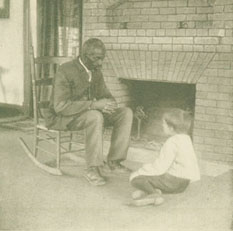 Recently , while researching ghost poetry I came across a poet and story-teller that I really like and felt like his style was right up my alley of spooky historical verse. His poems are simple and stirring and reflect the times in which he lived. I could not decide on just one, so I am including 3 of my favorites so far, that I enjoyed reading. The first one, made me feel like a kid again, sitting by a warm fire on a dark night, listening to a good spooky bedtime story. I hope you enjoy it as much as I did.
Recently , while researching ghost poetry I came across a poet and story-teller that I really like and felt like his style was right up my alley of spooky historical verse. His poems are simple and stirring and reflect the times in which he lived. I could not decide on just one, so I am including 3 of my favorites so far, that I enjoyed reading. The first one, made me feel like a kid again, sitting by a warm fire on a dark night, listening to a good spooky bedtime story. I hope you enjoy it as much as I did.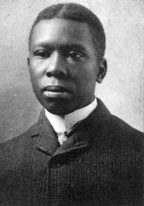 Paul Laurence Dunbar was the first African-American to gain national prominence as a poet. Born in 1872 in Dayton, Ohio, he was the son of ex-slaves and classmate to Orville Wright of aviation fame.
Paul Laurence Dunbar was the first African-American to gain national prominence as a poet. Born in 1872 in Dayton, Ohio, he was the son of ex-slaves and classmate to Orville Wright of aviation fame.

